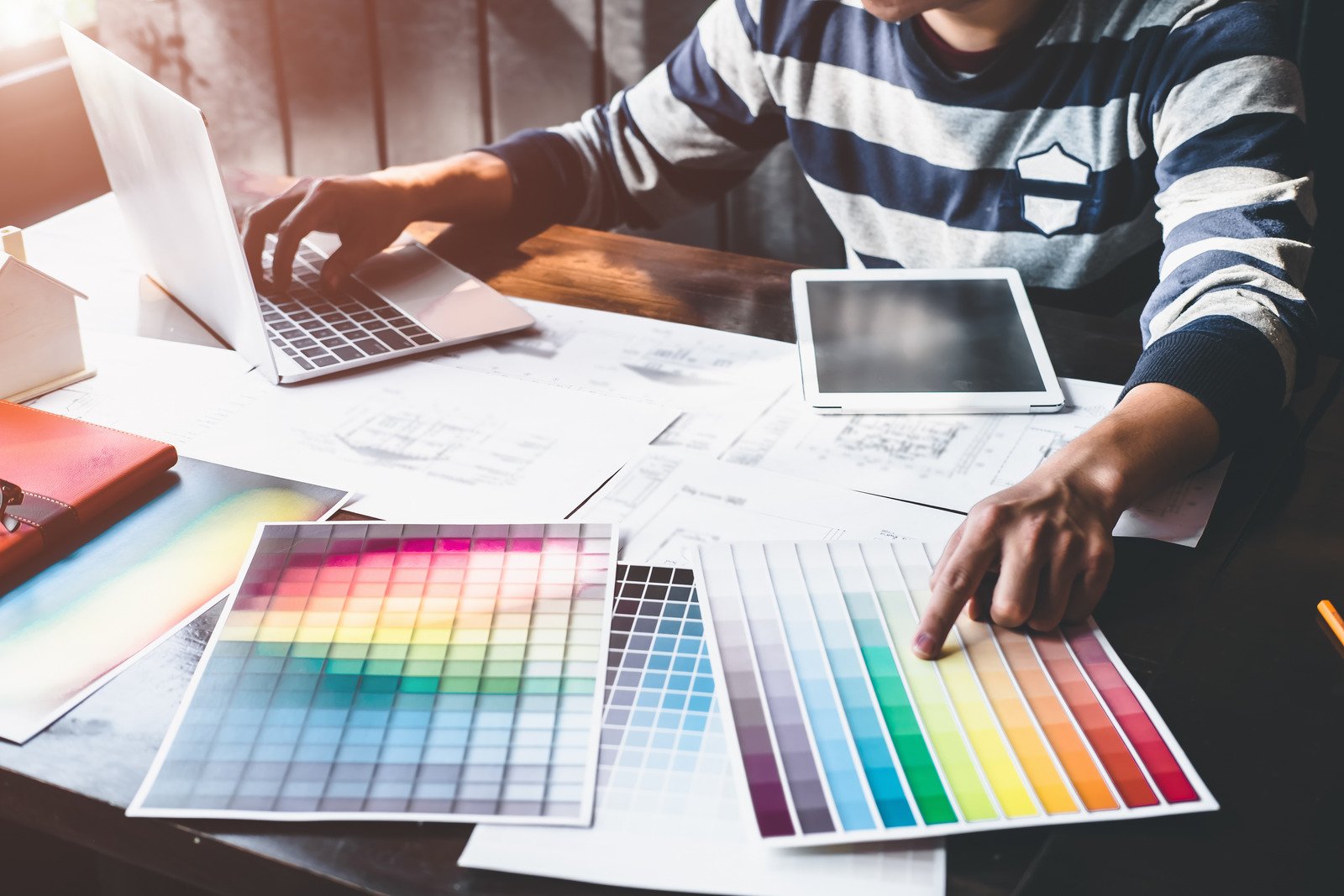Introduction to the Power of Visual Storytelling
Visual storytelling is more than just pretty pictures. It’s a powerful medium that can evoke emotions, spark curiosity, and convey complex ideas at a glance. In an age overwhelmed by information, the ability to tell stories through design has become essential. Every color choice, font selection, and layout plays a crucial role in how your message resonates with your audience.
Imagine flipping through a magazine or scrolling on social media and stopping at an image that makes you pause. That moment of engagement often stems from effective visual storytelling—a blend of artistry and purpose that captivates viewers. The right design doesn’t just grab attention; it creates connections and fosters understanding.
As we dive deeper into this world of visuals, let’s explore how to harness the art of design to tell compelling stories that stick with people long after they’ve seen them. Whether you’re designing for marketing campaigns, websites, or personal projects, mastering visual storytelling can elevate your work from ordinary to extraordinary.
The Importance of Design in Communicating a Message
Design plays a crucial role in how messages are perceived. It shapes the first impression and guides the viewer’s understanding.
When crafted well, design transforms complex ideas into digestible visuals. A simple layout can enhance clarity, ensuring that information is not just seen but also understood.
Colors evoke emotions and set moods. They influence decisions without words ever being spoken. For instance, blue often communicates trustworthiness while red stirs excitement or urgency.
Typography also matters significantly. The choice of font can convey professionalism or playfulness instantly. Clear typography ensures legibility across all platforms, making your message accessible to everyone.
Great design bridges gaps between intention and interpretation. It’s about more than aesthetics; it’s about connecting with your audience on a deeper level through thoughtful visual communication.
Understanding Your Audience and Their Preferences
To create compelling visual stories, understanding your audience is paramount. Every design decision should resonate with the people you’re trying to reach.
Start by diving into demographic data and insights about their interests. What inspires them? What challenges do they face? This knowledge shapes every aspect of your design process.
Consider conducting surveys or interviews. Genuine feedback can illuminate preferences you might overlook otherwise.
Pay attention to trends within specific communities as well. Social media platforms are treasure troves for gauging what visuals spark engagement and excitement among different groups.
Empathy plays a crucial role here. Put yourself in their shoes—what captivates them? By aligning your designs with their desires, you build a connection that transforms mere visuals into impactful narratives.
Elements of Design: Color, Typography, and Composition
Color is the heartbeat of design. It evokes emotions and sets the mood. A vibrant palette can energize a message, while soft hues may soothe the viewer’s mind. Choosing colors wisely can enhance storytelling in profound ways.
Typography speaks volumes without uttering a word. The font style can convey personality and tone. Bold typefaces grab attention, whereas elegant scripts might whisper sophistication. The right typography engages readers and guides their journey through your story.
Composition weaves everything together seamlessly. It’s about balance, alignment, and flow within the visual space. An effective layout directs focus where it matters most, creating a natural rhythm that leads viewers from one element to another effortlessly.
Each design element plays its unique role in crafting compelling narratives that resonate with audiences on multiple levels. Understanding how to manipulate these elements opens up endless possibilities for powerful visual storytelling.
Creating a Narrative Through Visuals
Visuals have the unique ability to tell stories without uttering a single word. Each image, color, and shape can evoke emotions and convey messages that resonate deeply with viewers.
Think of visuals as chapters in a book. Each element contributes to an overarching narrative, weaving together themes and ideas. For instance, a powerful photograph might capture raw emotion while graphic elements guide the eye along a specific path.
Imagery is not just about aesthetics; it’s about intention. When creating visuals, consider what story you want to tell. Use symbols and compositions that align with your message.
Narrative flow is essential too. A well-structured layout leads the viewer through the visual journey seamlessly, ensuring they grasp every key point along the way.
Incorporate contrasts—light against shadow or bold colors next to muted tones—to emphasize pivotal moments in your narrative, allowing each visual component to shine within its context.
Tips for Crafting Engaging Visual Stories
Start with a strong focal point. This draws the viewer’s eye and sets the stage for your story. A captivating central image or graphic can create immediate interest.
Use color deliberately. Different hues evoke various emotions and reactions, so select palettes that align with your narrative’s mood. Consider contrasting colors to highlight key elements.
Incorporate whitespace effectively. It allows the design to breathe and emphasizes important details without overwhelming the audience.
Utilize typography as an art form. The right font can enhance readability while also infusing personality into your visuals. Pair fonts thoughtfully for balance.
Create a visual flow that guides viewers through your story seamlessly. Arrange elements in a way that leads the eye from one section to another, ensuring clarity in your message.
Engage emotions by using relatable imagery or scenarios that resonate with your audience’s experiences. Personal connection keeps them invested in what you’re conveying.
Case Studies: Success Stories of Visual Storytelling in Design
One remarkable example of visual storytelling comes from Airbnb. They transformed their brand by showcasing user-generated content through stunning visuals. This approach not only highlighted unique experiences but also built trust within the community.
Another success story is Nike’s “Just Do It” campaign. The minimalist design combined with powerful imagery inspired countless individuals to push their limits. Every ad told a compelling narrative, creating an emotional connection that resonated deeply across diverse audiences.
Coca-Cola also excels in this realm, using vibrant colors and dynamic compositions in its advertisements. Their holiday campaigns often feature heartwarming stories that evoke nostalgia, drawing customers back year after year.
Apple masterfully utilizes clean lines and sleek typography to create aspirational narratives around innovation and creativity. Each product launch feels like a new chapter in a larger story about technology’s role in our lives.
The Future of Visual Storytelling in Design
The future of visual storytelling in design is poised for exciting transformations. Technology continues to evolve, providing new tools and platforms that enhance creativity. Augmented reality (AR) and virtual reality (VR) are leading the charge, allowing designers to create immersive experiences.
As user experience becomes paramount, personalized storytelling will take center stage. Data-driven insights will empower designers to tailor visuals that resonate deeply with specific audiences. Expect more interactive elements as well—engagement fosters connection.
Sustainability also plays a crucial role moving forward. Eco-friendly designs will not only tell stories but advocate for environmental responsibility. The emphasis on authenticity means visuals must reflect genuine narratives.
In this dynamic landscape, collaboration among artists, technologists, and marketers will yield innovative solutions. As boundaries blur between mediums, the art of visual storytelling will continue to evolve in ways we’re only beginning to imagine.
Conclusion
The journey of visual storytelling is an evolving masterpiece, one that demands both creativity and strategy. As we’ve explored, the power of design lies not just in aesthetics but in its ability to convey messages effectively. Understanding your audience is crucial; it allows you to tailor your visuals for maximum impact.
When considering elements like color, typography, and composition, remember they are more than decorative choices—they shape perception. Crafting a narrative through visuals can transform mundane information into engaging stories that resonate with viewers on a deeper level.
Effective visual storytelling isn’t just about creating something beautiful; it’s about evoking emotion and sparking connection. The right approach can lead to exceptional engagement and retention rates.
As we look ahead, the future of visual storytelling will undoubtedly continue to be influenced by advancements in technology and shifts in consumer preferences. Embracing these changes while staying true to core design principles will allow creators to captivate audiences like never before.
Understanding these dynamics enhances our ability to create meaningful connections through design—a goal well worth pursuing.





